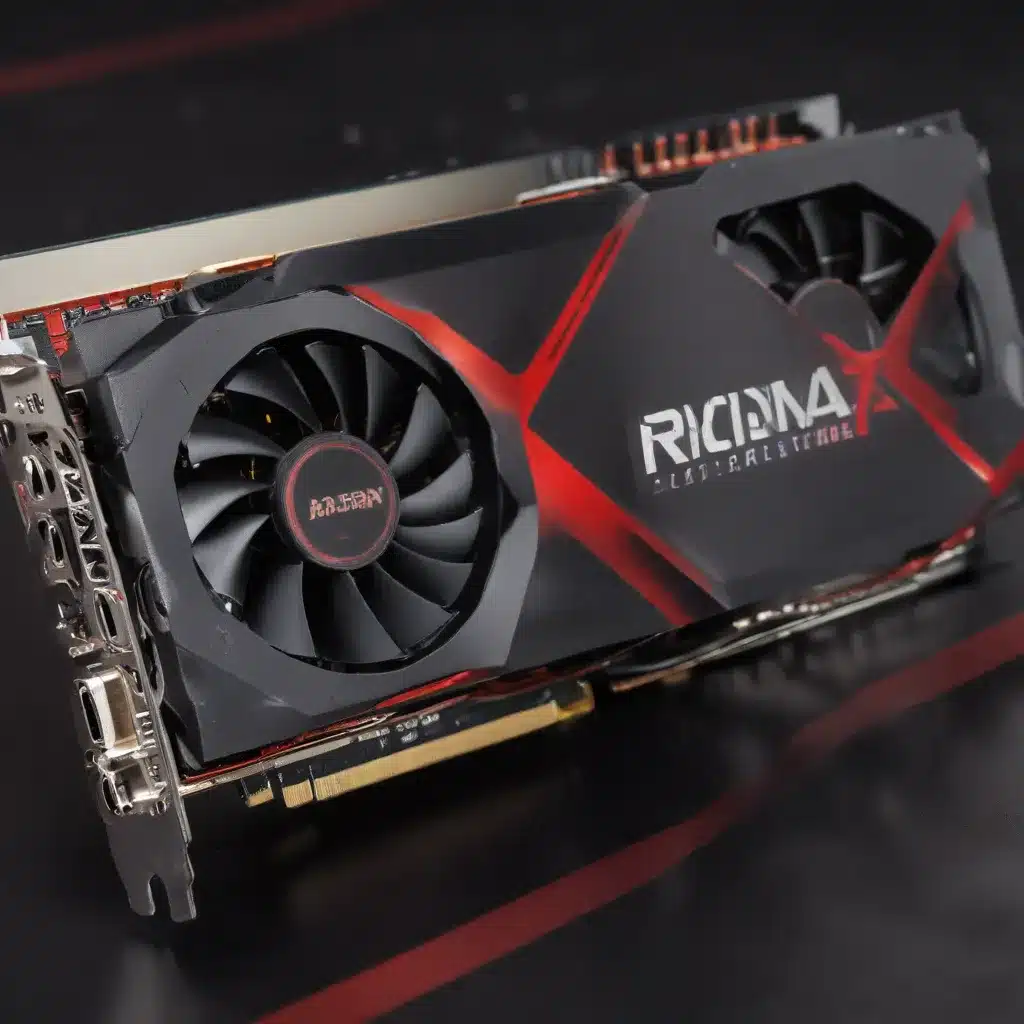
Graphics Processing Unit (GPU) Architecture
At the heart of AMD’s latest Radeon graphics cards lies the revolutionary RDNA 3 microarchitecture. This cutting-edge GPU design represents a significant leap forward in graphics processing capabilities, delivering exceptional performance and efficiency for gamers and professionals alike.
The RDNA 3 architecture introduces several key advancements that set it apart from its predecessors. One of the most notable enhancements is the Compute Unit (CU), which has been optimized to deliver over twice the AI performance per CU compared to the previous RDNA 2 generation. This improvement is enabled by the integration of up to 192 dedicated AI accelerators within each CU, allowing for seamless acceleration of machine learning and artificial intelligence workloads.
Furthermore, the RDNA 3 architecture boasts a significant increase in the number of Ray Accelerators, which are specialized hardware units dedicated to the real-time rendering of ray-traced graphics. This advancement, combined with the overall architectural improvements, positions AMD’s latest Radeon GPUs as formidable contenders in the realm of ray tracing, a technique that is becoming increasingly crucial for delivering stunning visual experiences in modern gaming and professional applications.
Radeon Graphics Innovations
Beyond the core GPU architecture, AMD’s RDNA 3-based Radeon graphics cards introduce a host of innovative features that enhance the overall graphics experience.
Rasterization Enhancements: The RDNA 3 architecture incorporates several advancements in the rasterization process, which is the foundation for traditional 3D graphics rendering. These enhancements optimize the way polygons are transformed into pixels, resulting in improved image quality, performance, and efficiency.
Ray Tracing Capabilities: AMD’s Radeon graphics cards equipped with the RDNA 3 architecture boast impressive ray tracing capabilities. By leveraging the increased number of Ray Accelerators, these GPUs can more effectively calculate the complex light interactions that are essential for realistic, lifelike visuals. This enables stunning reflections, shadows, and global illumination in games and professional applications.
Variable Rate Shading: RDNA 3-based Radeon GPUs introduce advanced Variable Rate Shading (VRS) techniques, which allow for selective and adaptive shading of different areas within a frame. This selective approach to shading can significantly improve performance without compromising visual quality, making it a valuable tool for optimizing graphics workloads.
Performance and Efficiency
The RDNA 3 architecture’s advancements in GPU design and power efficiency are equally impressive. AMD has made significant strides in improving the overall power consumption and thermal characteristics of their latest Radeon graphics cards, ensuring they deliver exceptional performance without excessive power draw or heat generation.
Improved Power Efficiency: Through refined manufacturing processes and architectural optimizations, AMD has achieved remarkable improvements in power efficiency. This translates to lower energy consumption and reduced thermal output, making RDNA 3-based Radeon GPUs more environmentally friendly and suitable for a wider range of system configurations, including compact and thermally constrained environments.
Clock Speed Advancements: The RDNA 3 architecture boasts impressive clock speed advancements, with Radeon graphics cards capable of reaching higher base and boost clock frequencies. This allows for increased processing power and improved performance across a variety of workloads, from gaming to content creation and AI-powered applications.
Memory Subsystem Optimizations: AMD has also focused on enhancing the memory subsystem of RDNA 3-based Radeon GPUs. These cards feature larger video memory capacities, up to 48GB of high-speed GDDR6 memory, and optimized memory controllers. This ensures that the GPU has ample resources to handle complex and data-intensive tasks, such as the processing of large machine learning models or the rendering of intricate 3D scenes.
Future of Radeon Graphics
As AMD continues to push the boundaries of graphics processing, the RDNA 3 architecture lays the foundation for the future of Radeon graphics. The company’s roadmap for the RDNA 3 and subsequent generations promises even more impressive advancements in performance, efficiency, and capabilities.
Roadmap for RDNA 3 and Beyond: AMD has hinted at further refinements and enhancements to the RDNA 3 architecture, as well as the development of next-generation RDNA 4 and beyond. These future iterations are expected to build upon the strengths of RDNA 3, offering even greater performance, power efficiency, and innovative features to meet the ever-evolving demands of the gaming and professional graphics industries.
Adoption in Gaming and Professional Applications: The RDNA 3 architecture’s impressive capabilities have already garnered significant attention from the gaming community and professional graphics users. As more game developers and software providers optimize their products to take advantage of the advanced features offered by RDNA 3-based Radeon GPUs, we can expect to see a surge in the adoption and utilization of these graphics solutions across a wide range of applications, from cutting-edge gaming experiences to high-performance workstation workflows.
Competitive Positioning in the GPU Market: With the introduction of the RDNA 3 architecture, AMD has solidified its position as a formidable competitor in the graphics processing unit (GPU) market. By delivering exceptional performance, power efficiency, and innovative features, the latest Radeon graphics cards are poised to challenge the dominance of their rivals, providing PC enthusiasts and professionals with a compelling alternative that meets their diverse needs.
As the IT Fix community eagerly awaits the continued evolution of AMD’s Radeon graphics solutions, the RDNA 3 architecture stands as a testament to the company’s commitment to pushing the boundaries of what’s possible in the world of graphics processing. With its impressive advancements and the promise of even greater things to come, the future of Radeon graphics looks brighter than ever.
To stay up-to-date with the latest developments in the IT industry, including the latest news and insights on AMD’s Radeon graphics, be sure to subscribe to the IT Fix email digest at https://itfix.org.uk/. Don’t miss out on the opportunity to explore the cutting edge of technology and gain valuable insights that can help you stay ahead of the curve.












